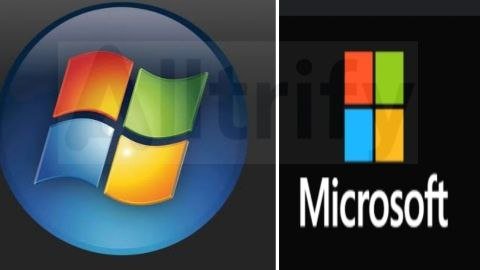Table of Contents
NUMA Architecture
Non-Uniform Memory Access (NUMA) is an architectural design utilized in multi-processor systems, where each processor has its own local memory, but can also access memory that is local to other processors. This architecture is particularly significant in enterprise environments, such as those utilizing Windows Server 2022, where performance and speed are critical for efficient operation. By optimizing memory access, NUMA reduces the time processors spend waiting for data, thus enhancing the overall efficiency of computing tasks.
In a NUMA system, memory access is categorized into local and remote categories. Local memory refers to the memory that is directly attached to a particular processor, allowing for faster access compared to remote memory, which is located elsewhere within the system architecture. The increase in latency when accessing remote memory can lead to performance bottlenecks, especially under workloads common in server environments. Therefore, NUMA architecture is designed to minimize these delays by allowing the processors to leverage their local memory as much as possible, which is a pivotal aspect in handling applications that require substantial memory resources, such as Microsoft Outlook 365.
The advantages of NUMA become particularly evident in scenarios where multiple processors are engaged in demanding computational tasks. Each processor can operate on its local memory, thereby reducing the contention for shared resources and enabling more efficient computation distribution. As organizations increasingly rely on applications like Outlook 365, which may necessitate robust memory and processing capabilities, the significance of NUMA becomes clear. It ensures that the system maintains high performance by optimizing CPU and memory interactions, allowing for seamless operation and minimizing the likelihood of performance degradation.
Details of the Bug and Microsoft’s Solution
Recently, a critical boot issue has emerged for users running Windows Server 2022, particularly those utilizing systems with two or more Non-Uniform Memory Access (NUMA) nodes. This significant vulnerability can prevent the server from booting correctly, leading to unanticipated downtimes and disruptions in service. Microsoft has acknowledged this issue in their KB5052819 support document, which outlines specific scenarios that trigger the boot failure. This affects configurations that take advantage of NUMA architecture, which is designed to optimize memory access based on process distribution amongst processors.
Upon investigation, Microsoft provided a deep analysis of the underlying causes of the bug and subsequently formulated a comprehensive response. They have issued an update package specifically aimed at addressing this issue. The solution is designed to identify and rectify any previous installations that may have contributed to the failure, thus ensuring that only the necessary and relevant updates to resolve the problem are downloaded. This structured approach not only simplifies the patching process but also reduces the risk of further complications arising from unnecessary updates.
The deployment of Microsoft Outlook 365 plays a crucial role in managing enterprise communications, emphasizing the need for reliable server functionality. As organizations increasingly rely on cloud-based communication tools, ensuring that Windows Server 2022 operates without interruption is vital for productivity and collaboration. Therefore, taking prompt action by applying the provided update can safeguard against potential data loss and operational downtime. Users should ensure that their systems are up-to-date by downloading the recommended update package, thereby reinstating the reliable performance expected from Windows Server 2022 operating systems, especially within frameworks that utilize Outlook 365 effectively.
Impact of the Servicing Stack Update
The Servicing Stack Update (SSU) is a critical component in the Windows operating system ecosystem, responsible for ensuring that the servicing stack—the framework that installs Windows updates—is stable and reliable. In the context of Windows Server 2022, the recent SSU associated with the critical boot issues and fix provided through Microsoft Outlook 365 demonstrates its enhanced role. The SSU is crucial for maintaining update reliability as it addresses issues that may arise during the installation process, thus minimizing the risk of update failures.
One specific update, KB5050117, included within the SSU for Windows Server 2022, brings several quality improvements that directly influence the overall operational efficiency of the system. This update not only fixes existing vulnerabilities but also improves the ability to install future updates more smoothly. With a robust servicing stack in place, devices are better equipped to receive and install the updates necessary for the continued security and performance of the system, including Microsoft Outlook 365 developments.
Moreover, the importance of this servicing stack cannot be overstated. As organizations increasingly rely on cloud-based services, such as Outlook 365, a stable update mechanism becomes imperative. It ensures that systems are equipped with the latest features, security patches, and performance enhancements, thus protecting users from potential threats and instabilities. Additionally, the SSU allows organizations to leverage the full capabilities of applications integrated with the Windows environment, enabling seamless updates to programs like Outlook 365.
In conclusion, the Servicing Stack Update plays a significant role in maintaining the operational integrity of Windows Server 2022 while facilitating a reliable update pathway for critical applications such as Outlook 365. Ensuring that the servicing stack is robust and effective is essential for the seamless function of modern IT infrastructure.
Previous Fixes and Ongoing Issues in Windows Server
Microsoft has consistently demonstrated its dedication to improving Windows Server functionality through a series of updates and fixes aimed at addressing critical system issues. Recent concerns in various server versions, particularly Windows Server 2019 and Windows Server 2022, have prompted the company to work diligently on solutions for boot problems, unresponsive states, and the infamous Blue Screen of Death (BSOD). These issues can significantly affect operational efficiency, leading to the potential loss of valuable time and resources.
For instance, in Windows Server 2019, users reported a variety of boot-related issues, prompting Microsoft to release patches that aimed to rectify the underlying causes. Among these fixes was a targeted update which addressed a notable problem whereby servers failed to boot successfully or suffered from prolonged freezes during the startup process. This keen focus on resolving such critical problems has provided reassurance to clients relying on these systems for their business operations.
Furthermore, ongoing efforts are being made by Microsoft to identify and resolve remaining boot issues, particularly in environments utilizing Internet Small Computer Systems Interface (iSCSI). The complexity of iSCSI in dynamic network settings presents unique challenges, and Microsoft’s proactive stance highlights their commitment to providing continuous support and updates for product reliability. As such, the integration of innovations like Outlook 365 also demonstrates the company’s broader commitment to enhancing user experiences across its suite of applications.
The recent fixes reflect an ongoing dialogue between Microsoft and its clientele, as feedback plays an instrumental role in the development of effective solutions. Users are encouraged to stay updated with the latest patches and releases to ensure their systems operate smoothly and efficiently, mitigating the potential disruptions that arise from unresolved boot issues.





